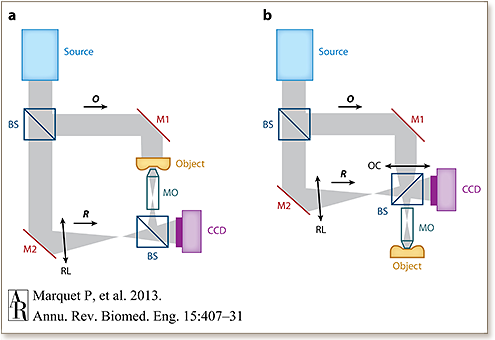 In this review, we summarize how the new concept of digital optics applied to the field of holographic microscopy has allowed the development of a reliable and flexible digital holographic quantitative phase microscopy (DH-QPM) technique at the nanoscale particularly suitable for cell imaging. Particular emphasis is placed on the original biological ormation provided by the quantitative phase signal. We present the most relevant DH-QPM applications in the field of cell biology, including automated cell counts, recognition, classification, three-dimensional tracking, discrimination between physiological and pathophysiological states, and the study of cell membrane fluctuations at the nanoscale. In the last part, original results show how DH-QPM can address two important issues in the field of neurobiology, namely, multiple-site optical recording of neuronal activity and noninvasive visualization of dendritic spine dynamics resulting from a full digital holographic microscopy tomographic approach.
In this review, we summarize how the new concept of digital optics applied to the field of holographic microscopy has allowed the development of a reliable and flexible digital holographic quantitative phase microscopy (DH-QPM) technique at the nanoscale particularly suitable for cell imaging. Particular emphasis is placed on the original biological ormation provided by the quantitative phase signal. We present the most relevant DH-QPM applications in the field of cell biology, including automated cell counts, recognition, classification, three-dimensional tracking, discrimination between physiological and pathophysiological states, and the study of cell membrane fluctuations at the nanoscale. In the last part, original results show how DH-QPM can address two important issues in the field of neurobiology, namely, multiple-site optical recording of neuronal activity and noninvasive visualization of dendritic spine dynamics resulting from a full digital holographic microscopy tomographic approach.